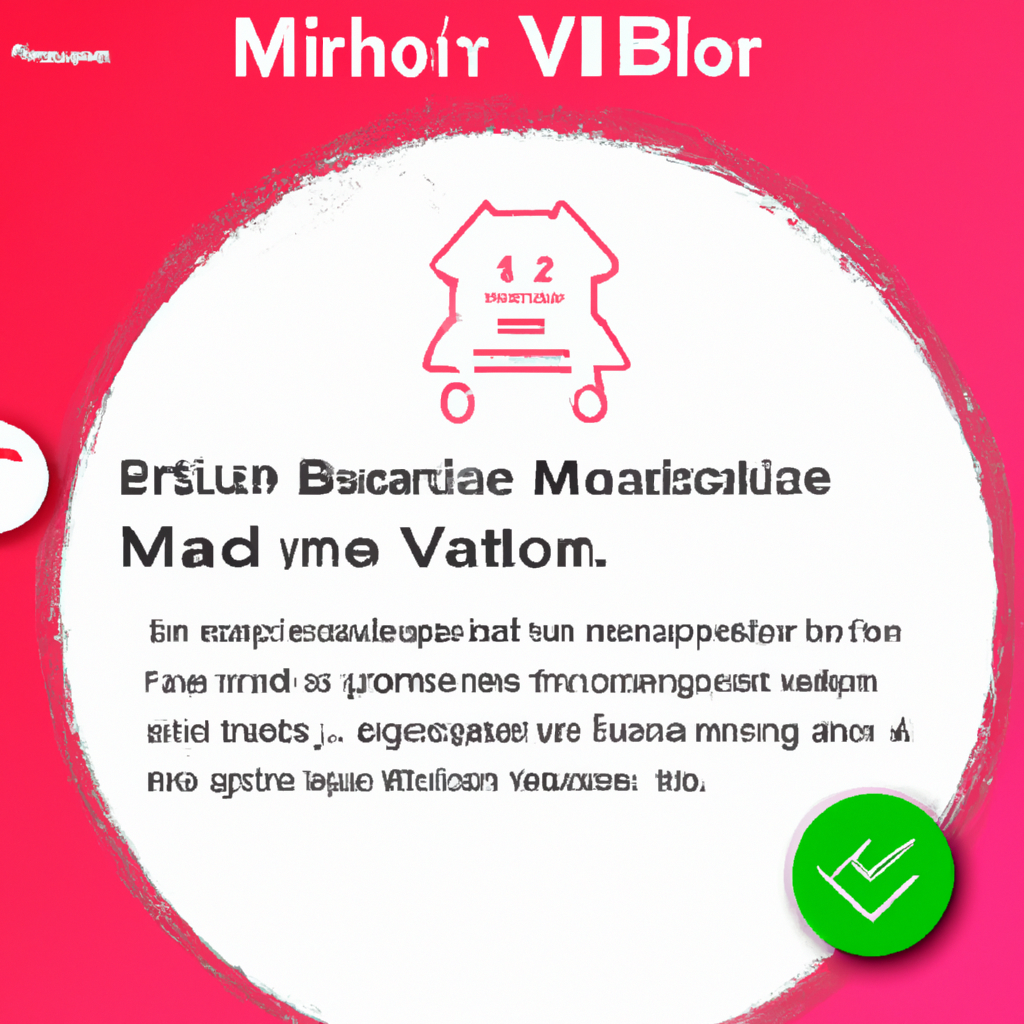Curious about how to measure the effectiveness and return on investment (ROI) of a chatbot in your organization? Look no further! In this article, we will explore various metrics and strategies to help you evaluate the success of your chatbot implementation. From user engagement to cost savings, we will delve into the key indicators that will enable you to assess the true impact of your chatbot on your organization’s goals. So, let’s dive in and uncover the valuable insights that will guide you in measuring the success and ROI of your chatbot.

Evaluate the Success of a Chatbot
In order to evaluate the success of a chatbot, it is important to define success metrics that can measure the effectiveness of the chatbot in achieving its goals. These metrics can be divided into three main categories: user engagement metrics, customer satisfaction metrics, and conversion metrics.
Define Success Metrics
Before evaluating the success of a chatbot, it is essential to establish clear objectives and define the metrics that will be used to measure those objectives. These metrics should align with the goals of the chatbot and reflect the desired outcomes. For example, if the goal of the chatbot is to increase customer satisfaction, metrics such as response time, user ratings, and repeat usage can be used to evaluate its success.
User Engagement Metrics
User engagement metrics focus on how users interact with the chatbot and indicate the level of engagement and interest. Metrics such as the number of conversations initiated, average conversation length, and user retention rate can provide insights into the effectiveness of the chatbot in engaging users. By analyzing these metrics, organizations can identify patterns and trends in user behavior and make improvements to enhance user engagement.
Customer Satisfaction Metrics
Customer satisfaction metrics measure the level of satisfaction and happiness of users with the chatbot. Metrics such as user ratings, feedback surveys, and Net Promoter Score (NPS) can be used to evaluate how well the chatbot meets the needs and expectations of users. By collecting and analyzing these metrics, organizations can identify areas of improvement and tailor the chatbot to better meet customer needs.
Conversion Metrics
Conversion metrics focus on measuring the effectiveness of the chatbot in driving desired actions or outcomes. These actions can vary depending on the organization’s goals, but commonly include conversions such as sales, lead generation, or customer support resolution. By tracking conversion metrics, organizations can determine the impact of the chatbot on achieving their desired outcomes and identify areas for optimization.
Measure the ROI of a Chatbot
In addition to evaluating the success of a chatbot, it is equally important to measure the return on investment (ROI) of implementing a chatbot. This involves assessing the cost savings, revenue generation, and impact on customer support costs and time savings.
Determine Cost Savings
One of the key benefits of using a chatbot is the potential cost savings it can provide. By automating repetitive tasks and reducing the need for human intervention, organizations can save on operational costs. To measure the cost savings, organizations can calculate the difference in expenses before and after implementing the chatbot, taking into account factors such as reduced staff hours or improved operational efficiency.
Calculate Revenue Generation
A successful chatbot can also contribute to revenue generation by driving sales, lead generation, or upselling opportunities. By tracking conversion metrics and linking them to revenue, organizations can calculate the revenue generated as a result of the chatbot. This can include metrics such as the number of sales or leads generated, the average value of each conversion, and the overall increase in revenue attributed to the chatbot.
Analyze Customer Support Costs
Chatbots are often used to handle customer support inquiries and reduce the need for human intervention. By comparing the costs associated with traditional customer support methods to those with the chatbot, organizations can analyze the cost savings achieved through the automation of support processes. This can include metrics such as the number of support tickets resolved by the chatbot, the average response time, and the reduction in support staff required.
Consider Time Savings
Another important aspect to consider when measuring the ROI of a chatbot is the time savings it can provide. By automating tasks and providing instant responses, chatbots can save both customers and employees valuable time. Organizations can measure the time savings by comparing the average handling time of support inquiries or user interactions before and after implementing the chatbot. This can provide a tangible measure of the efficiency and effectiveness of the chatbot in saving time.

Collecting Data for Evaluation
Collecting and analyzing data is crucial in evaluating the success and ROI of a chatbot. There are several methods and tools that can be used to gather the necessary data and insights.
Set Up Tracking Mechanisms
To collect data on the performance of a chatbot, it is important to set up tracking mechanisms that can capture relevant information. This can involve integrating the chatbot with analytics tools, customer relationship management (CRM) systems, or other tracking software. By setting up tracking mechanisms, organizations can collect data on user behavior, conversation patterns, and other relevant metrics.
Use Analytics Tools
Analytics tools can provide valuable insights into the performance and effectiveness of a chatbot. These tools can track metrics such as user engagement, conversion rates, and user satisfaction. By analyzing these metrics, organizations can identify trends, patterns, and areas for improvement. Popular analytics tools for chatbot evaluation include Google Analytics, Mixpanel, and Amplitude.
Gather Feedback from Users
One of the most direct ways to evaluate the success and effectiveness of a chatbot is by gathering feedback from its users. This can be done through surveys, feedback forms, or user interviews. By collecting feedback from users, organizations can gain valuable insights into their experiences, satisfaction levels, and suggestions for improvement. This qualitative feedback can complement the quantitative data collected through analytics tools.
Analyze Interaction Logs
Interaction logs, which include the chatbot’s conversations with users, can be a valuable source of data for evaluation. By analyzing these logs, organizations can gain insights into user preferences, common questions or issues, and areas for improvement. Interaction logs can also help in identifying areas where the chatbot may need additional training or customization.
Analyzing Success Metrics
Once the data has been collected, it is important to analyze the success metrics to gain insights into the performance of the chatbot.
Compare to Benchmarks
One way to analyze success metrics is by comparing them to industry benchmarks or established standards. This can provide a benchmark for evaluating the performance of the chatbot and identifying areas of improvement. For example, if the average response time of the chatbot is significantly higher than industry standards, it may indicate a need for optimization or improvement in response efficiency.
Identify Improvement Areas
By analyzing the success metrics, organizations can identify specific areas where the chatbot may be falling short or where improvements can be made. This can include areas such as response time, conversational flow, or user satisfaction ratings. By identifying improvement areas, organizations can develop strategies to address these issues and enhance the performance of the chatbot.
Consider Long-Term Impact
When evaluating the success of a chatbot, it is important to consider its long-term impact on the organization. This includes assessing its contribution to overall customer satisfaction, brand perception, and customer loyalty. By considering the long-term impact, organizations can determine whether the chatbot is achieving its intended goals and whether it provides long-term value to the organization.
Track Changes over Time
To evaluate the progress and effectiveness of a chatbot, it is important to track changes over time. This includes comparing success metrics at different time intervals and analyzing trends and patterns. By tracking changes over time, organizations can assess the impact of any optimizations or improvements made to the chatbot and determine whether the changes have led to positive outcomes.

Interpreting ROI Results
Assessing the return on investment (ROI) of a chatbot involves interpreting the financial impact and considering both tangible and intangible benefits.
Assess Financial Impact
To interpret the ROI results of a chatbot, organizations need to assess the financial impact. This can involve calculating the cost savings achieved, the revenue generated, and the overall financial benefits of the chatbot. By comparing the financial impact to the initial investment in the chatbot, organizations can determine the return on investment and assess its effectiveness.
Calculate Return on Investment
Return on investment (ROI) is a key metric used to evaluate the financial performance of a chatbot. ROI is calculated by dividing the net profit generated by the chatbot by the initial investment and expressing it as a percentage. A positive ROI indicates that the chatbot has generated more value than the initial investment, while a negative ROI suggests that the investment has not yielded the desired results.
Evaluate Payback Period
The payback period is the amount of time it takes for the initial investment in the chatbot to be recouped through cost savings or revenue generation. By calculating the payback period, organizations can determine how quickly they can expect to see a return on their investment. A shorter payback period is generally more favorable, as it indicates quicker financial benefits.
Consider Intangible Benefits
In addition to financial impact, it is important to consider the intangible benefits of a chatbot when interpreting ROI results. Intangible benefits can include improved customer satisfaction, enhanced brand perception, and increased operational efficiency. While these benefits may be more difficult to quantify, they can contribute to the overall success and value of the chatbot.
Factors Affecting Chatbot Success and ROI
Several factors can influence the success and ROI of a chatbot. Organizations should consider these factors when evaluating and optimizing the performance of their chatbot.
Chatbot Design and Functionality
The design and functionality of a chatbot play a crucial role in its success. A well-designed chatbot that is intuitive, user-friendly, and capable of understanding and responding accurately to user queries is more likely to be successful. The chatbot should also be designed to align with the organization’s brand and provide a seamless user experience.
User Experience
A positive user experience is essential for the success and adoption of a chatbot. The chatbot should be able to provide timely and relevant responses, be easily accessible across different platforms, and offer personalized interactions. By prioritizing user experience, organizations can enhance engagement and satisfaction, leading to a higher ROI.
Training and Maintenance
Continuous training and maintenance are key to ensuring the success of a chatbot. Chatbots rely on machine learning and natural language processing algorithms to understand and respond to user queries. Regular updates and training are necessary to keep the chatbot up to date with evolving user needs and language patterns. By investing in training and maintenance, organizations can optimize the performance and effectiveness of their chatbot.
Integration with Key Systems
For maximum success and ROI, a chatbot should be integrated with key systems such as customer relationship management (CRM) systems, e-commerce platforms, or support ticketing systems. Integration allows the chatbot to access and retrieve relevant data, provide personalized responses, and drive desired actions such as making a purchase or resolving a support inquiry. By integrating the chatbot with key systems, organizations can enhance its functionality and effectiveness.

Challenges in Evaluating Chatbot Success
Evaluating chatbot success comes with its own set of challenges. These challenges can make it difficult to accurately measure the success and ROI of a chatbot.
Measuring User Satisfaction
Measuring user satisfaction with a chatbot can be challenging as it involves capturing subjective opinions and experiences. While metrics such as user ratings and feedback surveys can provide some insights, they may not fully capture the nuances of user satisfaction. Organizations should strive to gather as much feedback as possible and use qualitative and quantitative data to assess user satisfaction levels.
Accurately Tracking Conversations
Accurately tracking conversations and interactions with a chatbot can be challenging, especially when users switch between different devices or channels. It is important to implement tracking mechanisms and analytics tools that can effectively capture and aggregate data from multiple touchpoints. This ensures that the data collected is comprehensive and provides a holistic view of user interactions with the chatbot.
Attributing Conversions
Attributing conversions to the chatbot can be complex, particularly when multiple touchpoints are involved in the customer journey. For example, a customer may interact with the chatbot initially but make a purchase through a different channel or device. To accurately attribute conversions, organizations need to implement tracking mechanisms and analytics tools that can trace and attribute conversions to the chatbot’s impact.
Distinguishing Chatbot vs Human Interactions
Differentiating between interactions with the chatbot and interactions with human agents can be a challenge in evaluating chatbot success. Organizations need to implement systems and tools that accurately capture and distinguish between the two. This enables organizations to assess the performance and effectiveness of the chatbot independently and understand its impact on customer interactions.
Best Practices for Chatbot Evaluation
To effectively evaluate the success and ROI of a chatbot, organizations can follow these best practices:
Establish Clear Objectives
Before evaluating the chatbot, it is essential to establish clear objectives and define the desired outcomes. This ensures that the evaluation process is focused and aligned with the organization’s goals. Clear objectives also provide a benchmark for measuring success and determining ROI.
Monitor Performance Continuously
Chatbot performance should be monitored continuously to identify any issues or areas for improvement. Regularly reviewing metrics and tracking performance helps in identifying trends, patterns, and opportunities to enhance the chatbot’s effectiveness. Continuous monitoring enables organizations to make timely adjustments and optimizations to improve the chatbot’s performance.
Collect and Analyze Relevant Data
Collecting and analyzing relevant data is crucial for evaluating the success and ROI of a chatbot. Organizations should collect both quantitative data, such as user engagement metrics and conversion rates, and qualitative data, such as user feedback and interaction logs. By analyzing this data, organizations can gain insights into the chatbot’s performance and identify areas for improvement.
Iterate and Improve
Evaluation should not be a one-time process. Organizations should continuously iterate and improve the chatbot based on the insights gained from the evaluation process. This can involve updating the chatbot’s responses, optimizing the conversational flow, or adding new features based on user feedback. By continuously iterating and improving, organizations can enhance the chatbot’s performance and ensure its long-term success.

Case Studies on Chatbot Success and ROI
Looking at case studies can provide valuable insights into the success and ROI of chatbots in real-world scenarios. Here are a few examples:
Company A: Improved Customer Satisfaction and Cost Savings
Company A implemented a chatbot to handle customer support inquiries and found that it significantly improved customer satisfaction ratings. The chatbot provided instant responses, reduced wait times, and resolved issues quickly. As a result, customer support costs were reduced by 30% due to decreased staff hours and increased efficiency.
Company B: Increased Sales and Revenue
Company B implemented a chatbot on their e-commerce website to assist customers with product recommendations and frequently asked questions. The chatbot’s personalized recommendations led to a 20% increase in average order value and a 15% increase in conversion rates. The chatbot also generated additional revenue by upselling and cross-selling products.
Company C: Streamlined Customer Support Operations
Company C implemented a chatbot to automate their customer support ticketing system. The chatbot was able to resolve common support inquiries and escalate complex issues to human agents. As a result, the average response time was reduced by 50% and the support team was able to handle a higher volume of inquiries, resulting in improved customer satisfaction and reduced support costs.
Company D: Enhanced User Experience and Time Savings
Company D implemented a chatbot as a virtual assistant for their mobile app. The chatbot provided personalized recommendations, answered user queries, and guided users through various app features. Users reported a significantly improved user experience, and the average time spent navigating the app was reduced by 30%. The chatbot also helped reduce the load on customer support agents, freeing them up for more complex inquiries.
Conclusion
Evaluating the success and ROI of a chatbot is crucial for organizations aiming to leverage this technology effectively. By defining success metrics, measuring ROI, collecting relevant data, and analyzing the results, organizations can gain valuable insights into the performance and effectiveness of their chatbot. Factors such as chatbot design, user experience, training, and integration with key systems can significantly impact the success and ROI of a chatbot. While challenges exist in evaluating chatbot success, following best practices and learning from real-world case studies can help organizations optimize the performance of their chatbot and maximize its value and return on investment.
